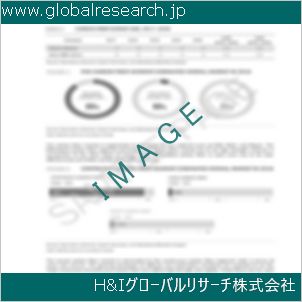Table of Contents
1 Industry Overview of L-Tartaric Acid
1.1 Definition and Specifications of L-Tartaric Acid
1.1.1 Definition of L-Tartaric Acid
1.1.2 Specifications of L-Tartaric Acid
1.2 Classification of L-Tartaric Acid
1.3 Applications of L-Tartaric Acid
1.3.1 Nuclear Application
1.3.2 Non-Nuclear Application
1.4 Industry Chain Structure of L-Tartaric Acid
1.5 Industry Overview and Major Regions Status of L-Tartaric Acid
1.5.1 Industry Overview of L-Tartaric Acid
1.5.2 Global Major Regions Status of L-Tartaric Acid
1.6 Industry Policy Analysis of L-Tartaric Acid
1.7 Industry News Analysis of L-Tartaric Acid
2 Manufacturing Cost Structure Analysis of L-Tartaric Acid
2.1 Raw Material Suppliers and Price Analysis of L-Tartaric Acid
2.2 Equipment Suppliers and Price Analysis of L-Tartaric Acid
2.3 Labor Cost Analysis of L-Tartaric Acid
2.4 Other Costs Analysis of L-Tartaric Acid
2.5 Manufacturing Cost Structure Analysis of L-Tartaric Acid
2.6 Manufacturing Process Analysis of L-Tartaric Acid
3 Technical Data and Manufacturing Plants Analysis of L-Tartaric Acid
3.1 Capacity and Commercial Production Date of Global L-Tartaric Acid Major Manufacturers in 2023
3.2 Manufacturing Plants Distribution of Global L-Tartaric Acid Major Manufacturers in 2023
3.3 R&D Status and Technology Source of Global L-Tartaric Acid Major Manufacturers in 2023
3.4 Raw Materials Sources Analysis of Global L-Tartaric Acid Major Manufacturers in 2023
4 Capacity, Production and Revenue Analysis of L-Tartaric Acid by Regions, Types and Manufacturers
4.1 Global Capacity, Production and Revenue of L-Tartaric Acid by Regions 2019-2024
4.2 Global and Major Regions Capacity, Production, Revenue and Growth Rate of L-Tartaric Acid 2019-2024
4.3 Global Capacity, Production and Revenue of L-Tartaric Acid by Types 2019-2024
4.4 Global Capacity, Production and Revenue of L-Tartaric Acid by Manufacturers 2019-2024
5 Price, Cost, Gross and Gross Margin Analysis of L-Tartaric Acid by Regions, Types and Manufacturers
5.1 Price, Cost, Gross and Gross Margin Analysis of L-Tartaric Acid by Regions 2019-2024
5.2 Price, Cost, Gross and Gross Margin Analysis of L-Tartaric Acid by Types 2019-2024
5.3 Price, Cost, Gross and Gross Margin Analysis of L-Tartaric Acid by Manufacturers 2019-2024
6 Consumption Volume, Consumption Value and Sale Price Analysis of L-Tartaric Acid by Regions, Types and Applications
6.1 Global Consumption Volume and Consumption Value of L-Tartaric Acid by Regions 2019-2024
6.2 Global and Major Regions Consumption Volume, Consumption Value and Growth Rate of L-Tartaric Acid 2019-2024
6.3 Global Consumption Volume and Consumption Value of L-Tartaric Acid by Types 2019-2024
6.4 Global Consumption Volume and Consumption Value of L-Tartaric Acid by Applications 2019-2024
6.5 Sale Price of L-Tartaric Acid by Regions 2019-2024
6.6 Sale Price of L-Tartaric Acid by Types 2019-2024
6.7 Sale Price of L-Tartaric Acid by Applications 2019-2024
6.8 Market Share Analysis of L-Tartaric Acid by Different Sale Price Levels
7 Supply, Import, Export and Consumption Analysis of L-Tartaric Acid
7.1 Supply, Consumption and Gap of L-Tartaric Acid 2019-2024
7.2 Global Capacity, Production, Price, Cost, Revenue, Supply, Import, Export and Consumption of L-Tartaric Acid 2019-2024
7.3 USA Capacity, Production, Price, Cost, Revenue, Supply, Import, Export and Consumption of L-Tartaric Acid 2019-2024
7.4 EU Capacity, Production, Price, Cost, Revenue, Supply, Import, Export and Consumption of L-Tartaric Acid 2019-2024
7.5 China Capacity, Production, Price, Cost, Revenue, Supply, Import, Export and Consumption of L-Tartaric Acid 2019-2024
7.6 Japan Capacity, Production, Price, Cost, Revenue, Supply, Import, Export and Consumption of L-Tartaric Acid 2019-2024
8 Major Manufacturers Analysis of L-Tartaric Acid
8.1 Manufacturer One
8.1.1 Company Profile
8.1.2 Product Picture and Specifications
8.1.2.1 Type I
8.1.2.2 Type II
8.1.2.3 Type III
8.1.3 Capacity, Production, Price, Cost, Gross and Revenue
8.1.4 Contact Information
8.2 Manufacturer Two
8.2.1 Company Profile
8.2.2 Product Picture and Specifications
8.2.2.1 Type I
8.2.2.2 Type II
8.2.2.3 Type III
8.2.3 Capacity, Production, Price, Cost, Gross and Revenue
8.2.4 Contact Information
8.3 Manufacturer Three
8.3.1 Company Profile
8.3.2 Product Picture and Specifications
8.3.2.1 Type I
8.3.2.2 Type II
8.3.2.3 Type III
8.3.3 Capacity, Production, Price, Cost, Gross and Revenue
8.3.4 Contact Information
8.4 Manufacturer Four
8.4.1 Company Profile
8.4.2 Product Picture and Specifications
8.4.2.1 Type I
8.4.2.2 Type II
8.4.2.3 Type III
8.4.3 Capacity, Production, Price, Cost, Gross and Revenue
8.4.4 Contact Information
8.5 Manufacturer Five
8.5.1 Company Profile
8.5.2 Product Picture and Specifications
8.5.2.1 Type I
8.5.2.2 Type II
8.5.2.3 Type III
8.5.3 Capacity, Production, Price, Cost, Gross and Revenue
8.5.4 Contact Information
…
9 Marketing Trader or Distributor Analysis of L-Tartaric Acid
9.1 Marketing Channels Status of L-Tartaric Acid
9.2 Traders or Distributors with Contact Information of L-Tartaric Acid by Regions
9.3 Ex-work Price, Channel Price and End Buyer Price Analysis of L-Tartaric Acid
9.4 Regional Import, Export and Trade Analysis of L-Tartaric Acid
10 Industry Chain Analysis of L-Tartaric Acid
10.1 Upstream Major Raw Materials Suppliers Analysis of L-Tartaric Acid
10.1.1 Major Raw Materials Suppliers with Contact Information Analysis of L-Tartaric Acid
10.1.2 Major Raw Materials Suppliers with Supply Volume Analysis of L-Tartaric Acid by Regions
10.2 Upstream Major Equipment Suppliers Analysis of L-Tartaric Acid
10.2.1 Major Equipment Suppliers with Contact Information Analysis of L-Tartaric Acid
10.2.2 Major Equipment Suppliers with Product Pictures Analysis of L-Tartaric Acid by Regions
10.3 Downstream Major Consumers Analysis of L-Tartaric Acid
10.3.1 Major Consumers with Contact Information Analysis of L-Tartaric Acid
10.3.2 Major Consumers with Consumption Volume Analysis of L-Tartaric Acid by Regions
10.4 Supply Chain Relationship Analysis of L-Tartaric Acid
11 Development Trend of Analysis of L-Tartaric Acid
11.1 Capacity, Production and Revenue Forecast of L-Tartaric Acid by Regions and Types
11.1.1 Global Capacity, Production and Revenue of L-Tartaric Acid by Regions 2024-2029
11.1.2 Global and Major Regions Capacity, Production, Revenue and Growth Rate of L-Tartaric Acid 2024-2029
11.1.3 Global Capacity, Production and Revenue of L-Tartaric Acid by Types 2024-2029
11.2 Consumption Volume and Consumption Value Forecast of L-Tartaric Acid by Regions, Types and Applications
11.2.1 Global Consumption Volume and Consumption Value of L-Tartaric Acid by Regions 2024-2029
11.2.2 Global and Major Regions Consumption Volume, Consumption Value and Growth Rate of L-Tartaric Acid 2024-2029
11.2.3 Global Consumption Volume and Consumption Value of L-Tartaric Acid by Types 2024-2029
11.2.4 Global Consumption Volume and Consumption Value of L-Tartaric Acid by Applications 2024-2029
11.3 Supply, Import, Export and Consumption Forecast of L-Tartaric Acid
11.3.1 Supply, Consumption and Gap of L-Tartaric Acid 2024-2029
11.3.2 Global Capacity, Production, Price, Cost, Revenue, Supply, Import, Export and Consumption of L-Tartaric Acid 2024-2029
11.3.3 USA Capacity, Production, Price, Cost, Revenue, Supply, Import, Export and Consumption of L-Tartaric Acid 2024-2029
11.3.4 EU Capacity, Production, Price, Cost, Revenue, Supply, Import, Export and Consumption of L-Tartaric Acid 2024-2029
11.3.5 China Capacity, Production, Price, Cost, Revenue, Supply, Import, Export and Consumption of L-Tartaric Acid 2024-2029
11.3.6 Japan Capacity, Production, Price, Cost, Revenue, Supply, Import, Export and Consumption of L-Tartaric Acid 2024-2029
12 New Project Investment Feasibility Analysis of L-Tartaric Acid
12.1 New Project SWOT Analysis of L-Tartaric Acid
12.2 New Project Investment Feasibility Analysis of L-Tartaric Acid
13 Conclusion of the Global L-Tartaric Acid (CAS 87-69-4) Industry 2024 Market Research Report
| ※参考情報 L-酒石酸(L-Tartaric Acid)は、有機化合物であり、広く利用されているカルボン酸の一種です。この化合物は、特にぶどうやその他の植物に自然に存在し、特にワインの製造過程において重要な役割を果たします。以下にL-酒石酸の定義、特徴、種類、用途、関連技術について詳述いたします。 L-酒石酸の定義としては、分子式C4H6O6を持つ二価のカルボン酸であり、カルボキシ基(-COOH)を2つ持つことが大きな特徴です。この構造により、L-酒石酸は多くの化学反応に参加する能力があります。CAS番号は87-69-4で、これにより商業的なトレーディングや研究に際しての識別が可能です。 L-酒石酸の特徴には、まずその水溶性があります。水に溶けやすく、温度とともに溶解度が増加する性質があります。また、酸味があり、pHに応じてその性質を変えることも特徴の一つです。さらに、L-酒石酸はキラリティを持っており、L体(左旋性)とD体(右旋性)の二種類の異性体が存在します。特にL体が自然界では一般的に存在し、食品や医療用途に広く使用されています。 L-酒石酸には、いくつかの種類が存在します。主なものとして、L-酒石酸とD-酒石酸、それに加えてそのラセミ体であるDL-酒石酸が挙げられます。L-酒石酸は、生物学的にも重要な役割を果たし、特に細胞内の代謝プロセスに関与しています。 L-酒石酸の用途は非常に多岐にわたります。食品業界では、主に酸味料や防腐剤として用いられています。特にワイン製造においては、品質維持や風味の向上に寄与するほか、クリスタルの形で沈殿物として現れることもあります。また、L-酒石酸はベーキングパウダーの成分としても利用されており、発泡剤としての役割があります。さらに、製菓業界では、チョコレートやキャンディーの製造にも使用され、食感や風味を改善する効果があります。 医療分野においてもL-酒石酸は重要な役割を果たしています。例えば、医薬品の製造過程での緩衝剤や安定剤として利用されることがあります。L-酒石酸は、特定の薬物の溶解度を高めたり、安定性を向上させたりするために使用されることが多いです。また、栄養補助食品やサプリメントの成分としても見ることができます。 さらに、L-酒石酸は化学工業においても利用されています。ポリマー製造や化学合成の際に、反応中間体や触媒として機能する場合があります。また、新しい材料の研究開発においても欠かせない成分となっており、エコフレンドリーな製品を生み出すための原料としての可能性も広がっています。 関連技術に目を向けると、L-酒石酸の製造方法にはいくつかの選択肢があります。一般的な製法には、自然由来の原料(通常はぶどう搾りかすなど)を用いる方法と、人工合成による方法があります。特に生物由来の製造手法は、近年の持続可能性や環境への配慮から注目されています。生物工学の進展により、微生物を利用してL-酒石酸を効率的に生産する技術も研究されています。 また、L-酒石酸の特性を活かした新たな応用が続々と開発されているため、今後の研究も光明があります。たとえば、材料科学やバイオテクノロジーの分野では、L-酒石酸を基にしたバイオポリマーの開発が進められており、これにより生分解性の素材が期待されています。さらに、機能性食品や新規医薬品の分野でもL-酒石酸の可能性を探る研究が行われています。 総括すると、L-酒石酸はその多様な特色と広範な用途から、食品、医療、化学工業などさまざまな分野で利用されています。今後の研究と技術の進展により、さらなる用途の拡大や新しい製品の開発が期待されており、持続可能な社会に向けた貢献も見込まれています。L-酒石酸は、物質としてだけでなく、科学や技術の進展においても鍵となる存在であると言えるでしょう。 |
❖ 免責事項 ❖
http://www.globalresearch.jp/disclaimer












